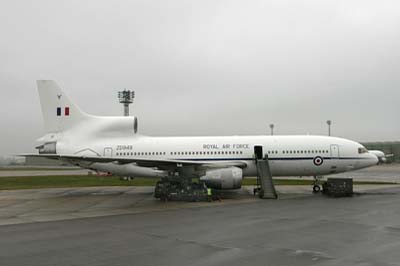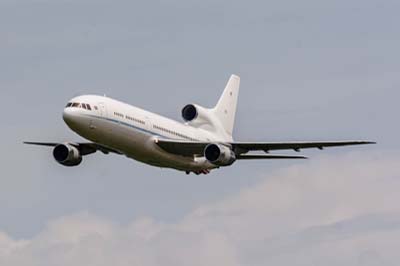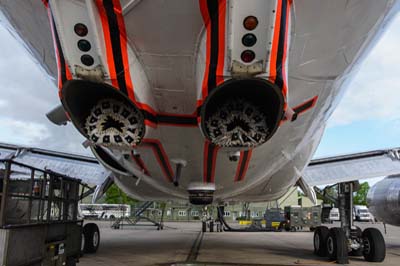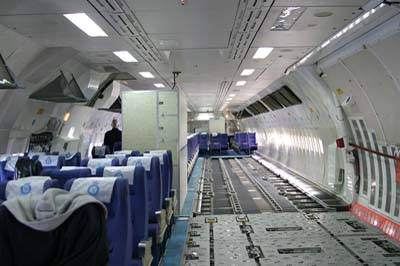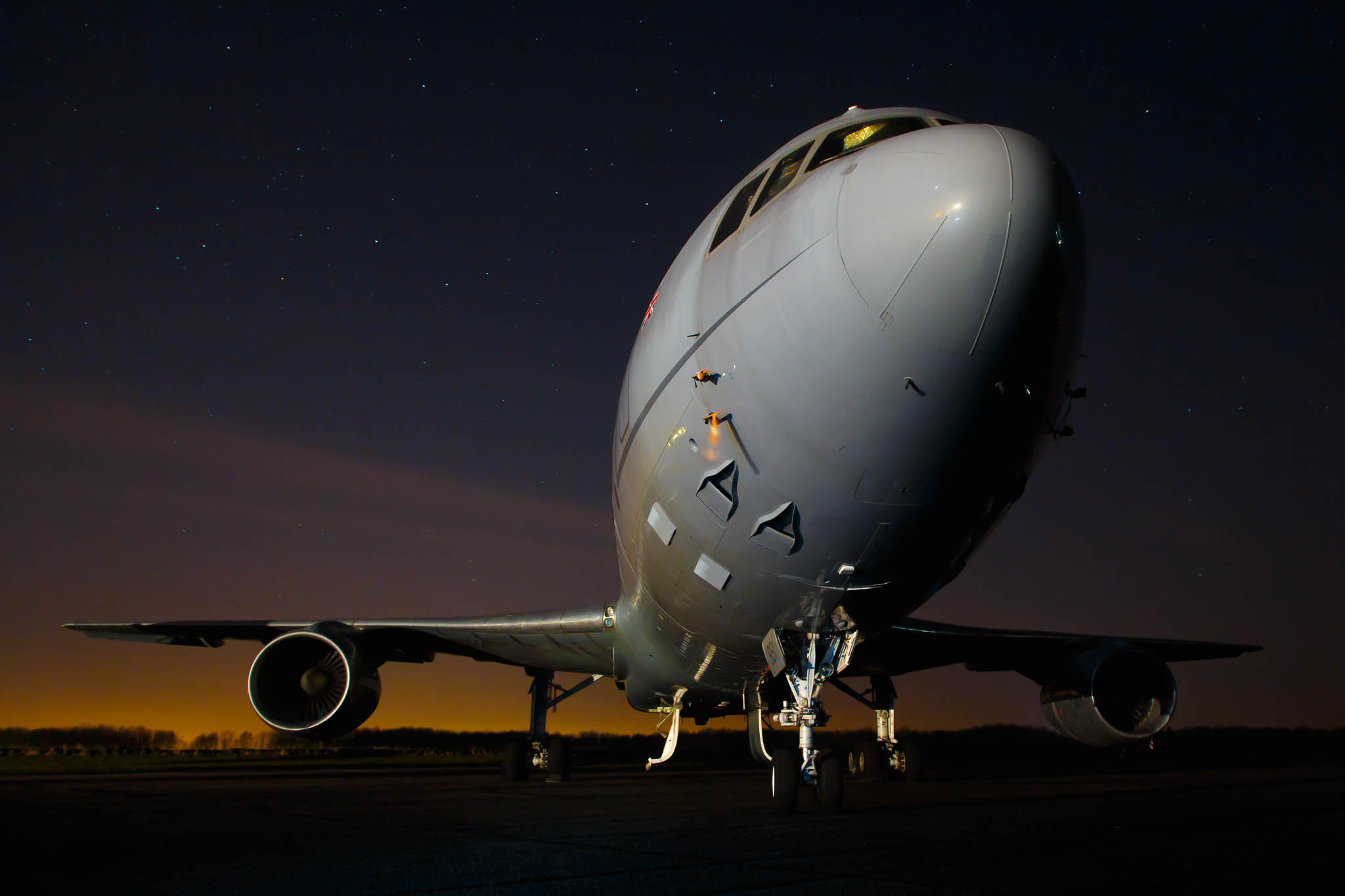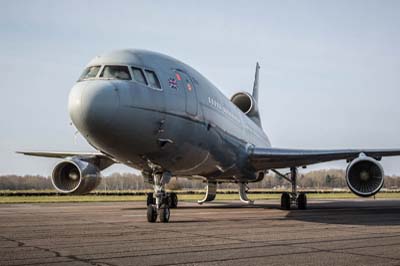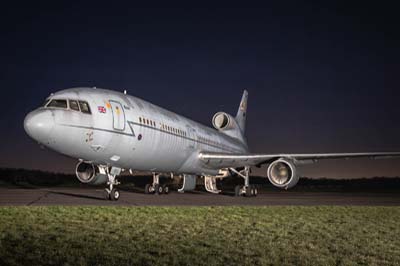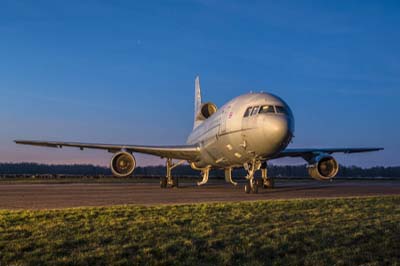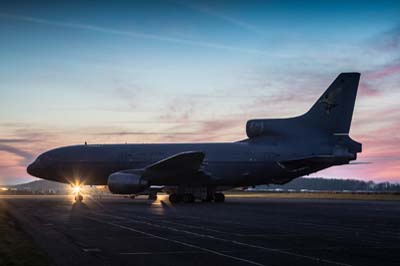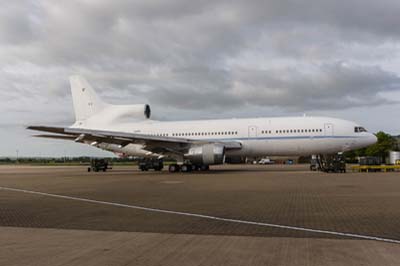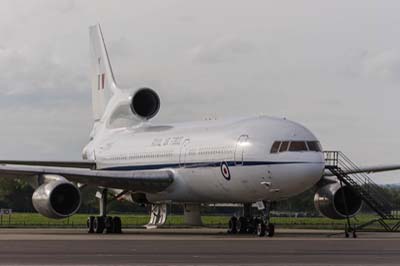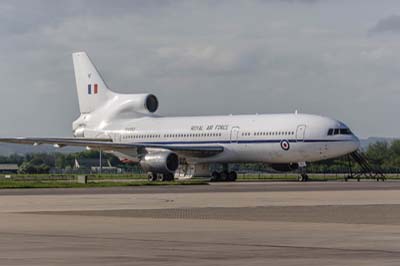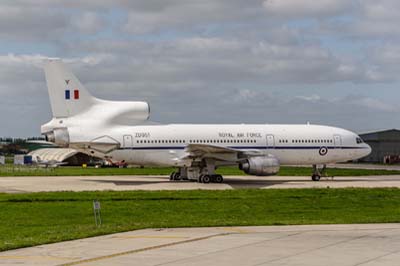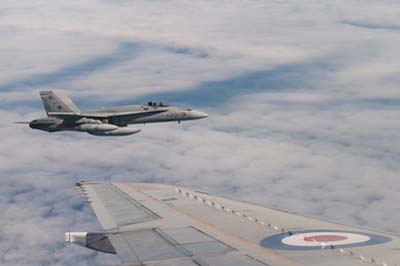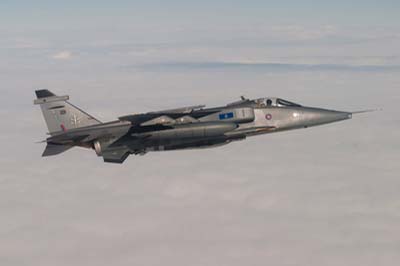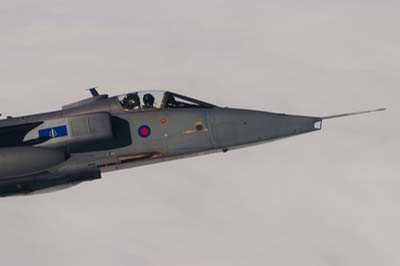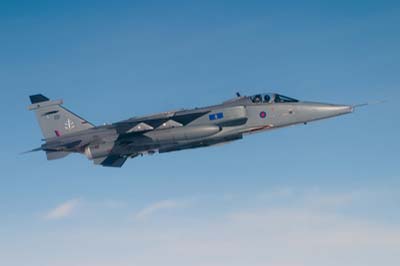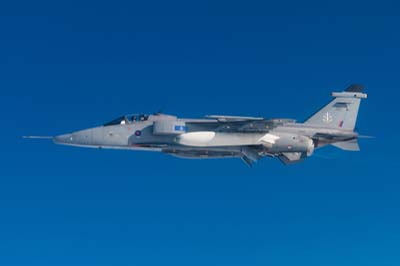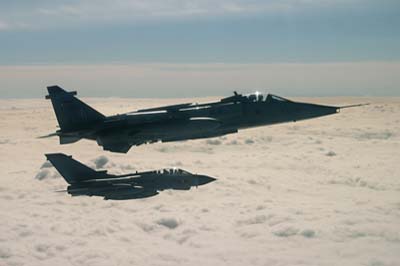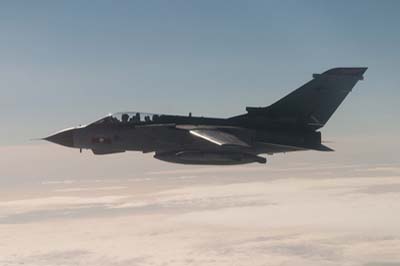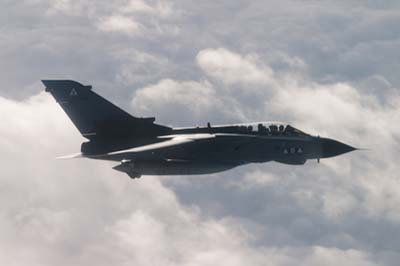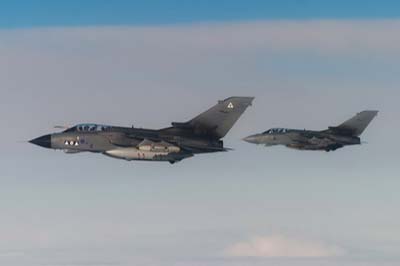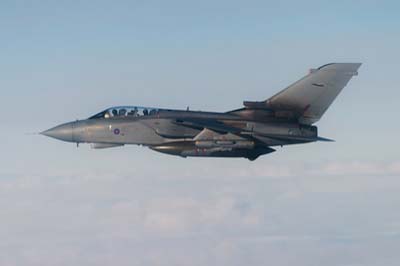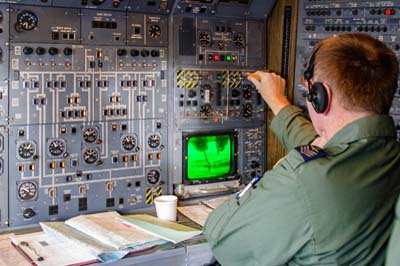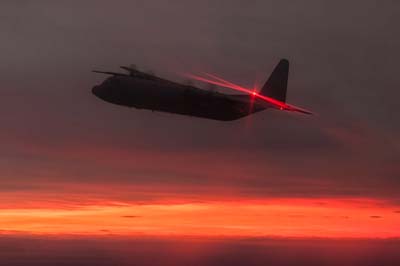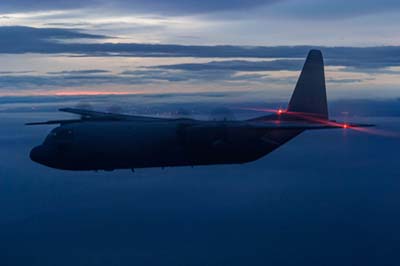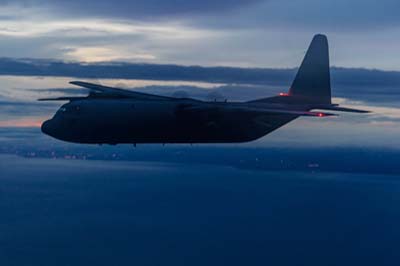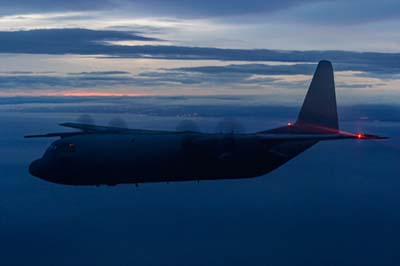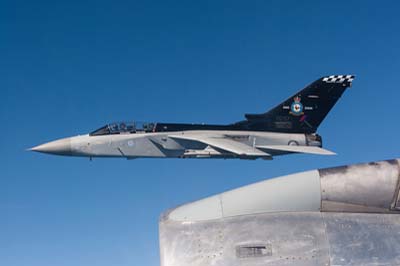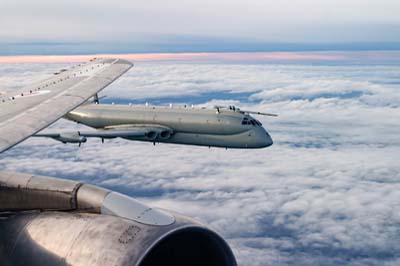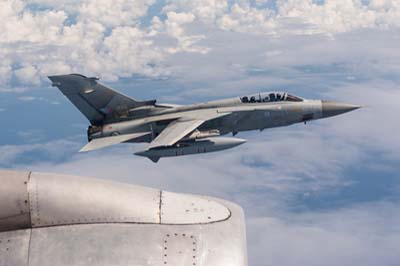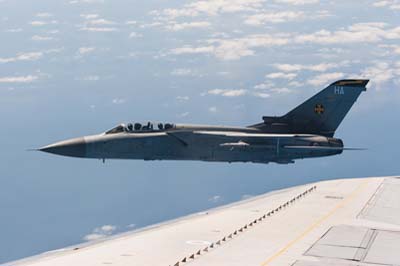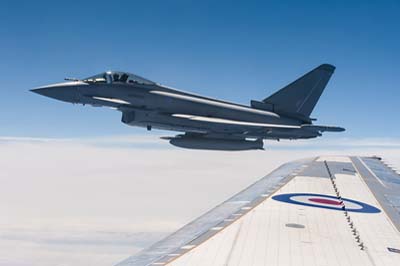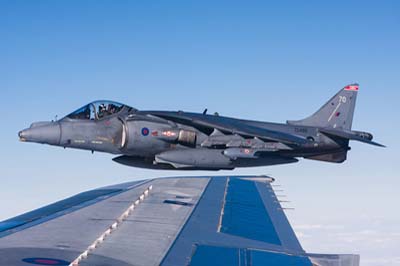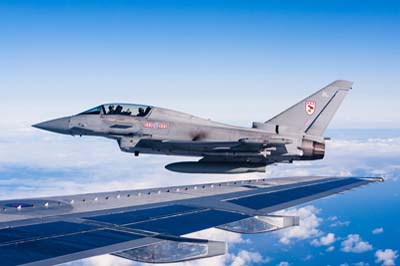Air to Air Photography
Aerial Refuelling with 216 Squadron |
A day with 216 Squadron
It's 6:00 am and today is my birthday, but more important than opening my presents is preparing for todays photographic assignment. A short time later I am on the road, there is no sign of the sun through the thick cloud cover. For once I am not disappointed with the dull weather, as I am off to fly with 216 Squadron from Brize Norton above the cloud for some air to air photography. |
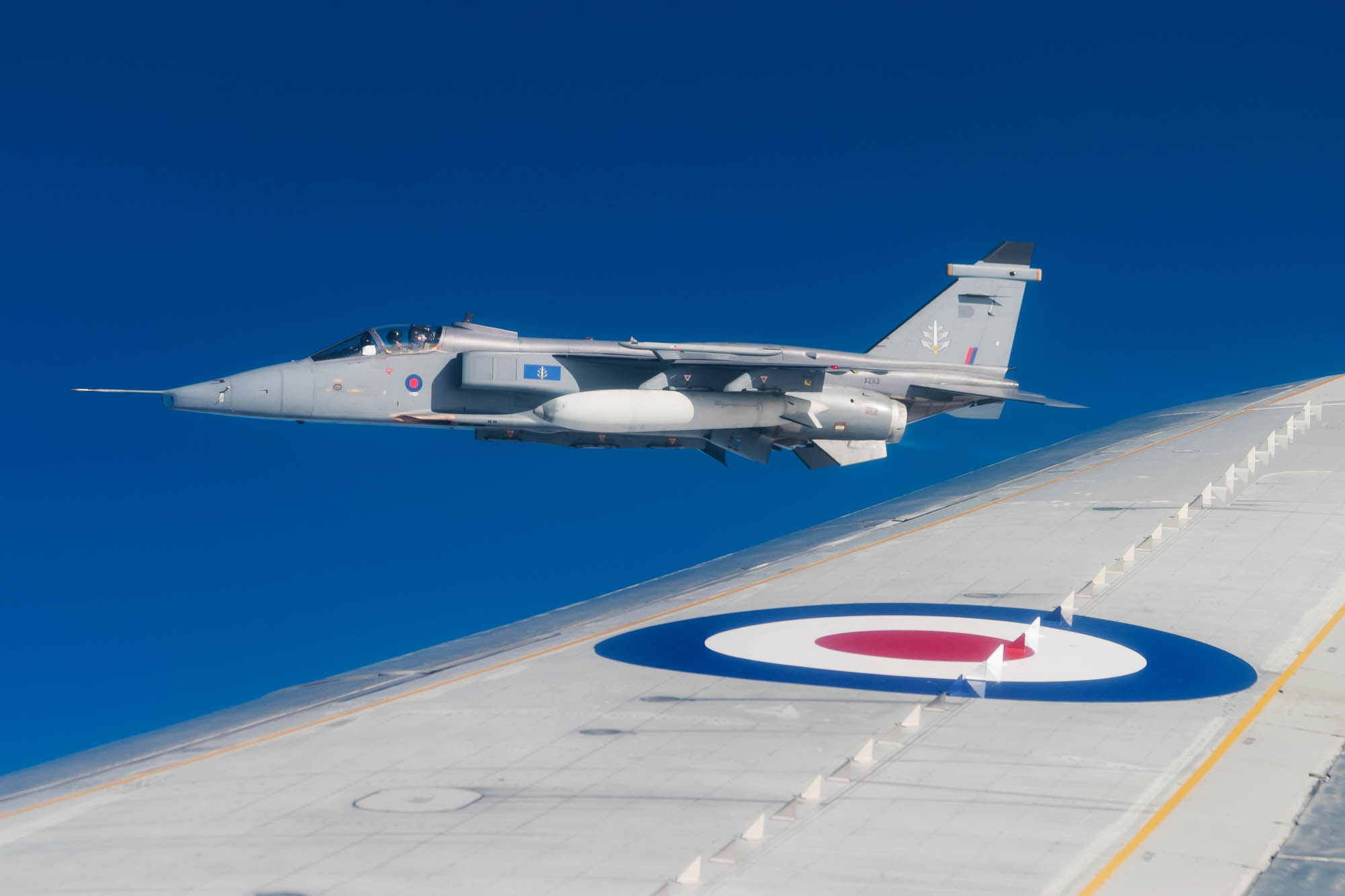 |
Earlier in the week I had a call, asking if I was interested in Thursdays flight 'Fagin 43'. (The 'Fagin' callsigns start with '11' on Monday, '21' on Tuesday. So 'Fagin 43' was the third flight on Thursday). The 'trade' (RAF term for the aircraft requiring fuel) was provisionally eight Tornado F.3s, four Jaguars and the only remaining Tornado GR.1 on trials with BAE Systems at Warton. By yesterday everything had changed, I was now booked on an earlier flight, 'Fagin 42'. The reason I was told was that if 'Fagin 42' had technical problems (which is not unusual), I could hop across to 'Fagin 43'. The 'trade' now was ten Tornado GR.4s, two F.3s and a Jaguar. The GR.1 had been withdrawn.
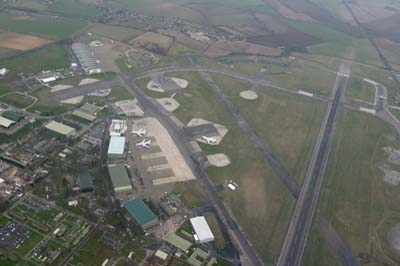 I checked in at the passenger terminal and await my flight to be called. Despite battery isolation problems with the TriStar and being returned to the terminal, we are recalled and board at 10:20, the engines start up at 10:30 and we are airborne at 10:45, enroute to Air to Air Refuelling Area 7 (AARA 7), over the North Sea, just north of the Wash. The safety briefing includes a reminder to not use the toilets when the seat belt light is on. The reason for this is that the seat belt light indicates refuelling in progress and as the wash basins drain out of the back of the TriStar, they spray over the receiving aircraft!
I checked in at the passenger terminal and await my flight to be called. Despite battery isolation problems with the TriStar and being returned to the terminal, we are recalled and board at 10:20, the engines start up at 10:30 and we are airborne at 10:45, enroute to Air to Air Refuelling Area 7 (AARA 7), over the North Sea, just north of the Wash. The safety briefing includes a reminder to not use the toilets when the seat belt light is on. The reason for this is that the seat belt light indicates refuelling in progress and as the wash basins drain out of the back of the TriStar, they spray over the receiving aircraft!
Once airborne I am shown the 'trade' for the day in the form of the UK Daily Tasking Sheet. It shows that we should expect a Jaguar GR.3A from the SAOEU (later became FJ&W OEU), four Tornado GR.4s from 617 Squadron, a GR.4 from 9 Squadron, two F.3s from 25 Squadron and six GR.4s from 2 Squadron. It also states that the GR.3A is conducting fuel consumption trials and takes precedence over all other aircraft requesting fuel. Over 5 hours later when we only see four GR.4s I realise that the Jaguar which was with us the whole time, perhaps caused the missing 'trade' to go elsewhere, probably to 'Fagin 43'.
We on task at 18,000 feet conducting a figure of eight, rather then a race-track flight pattern and find that the Jaguar has been delayed. By 12:15 however, the Jaguar is with us and the fun begins.
|
Aboard 'Fagin 43' half the plane is fitted with seats, whilst the rest has been left for freight or for more seats depending on the mission. As the windows on this TriStar (ZD948) have apparently been cleaned with wire brushes, their suitability for photography is limited to just around ten windows. The first thing to do is push the seats forward by the few good windows, so that it is obvious when moving quickly from one position to another, which are the clear windows. De-icer over the good windows appears to be an added nuisance today.
The RAF has nine TriStars of various marks (KC.1/K.1/C.2/C.2A) with 216 squadron in the strategic tanker role. The TriStar K.1 can be fitted with up to 204 passenger seats for the trooping role. The TriStar KC.1 tanker/freight aircraft have a large 140 x 102 inch, cargo door and a roller conveyer system capable of accepting up to 20 cargo pallets or seating for up to 196 passengers. It can carry 136 tonnes of fuel which, in the Air to Air Refuelling (AAR) role, is transferable through the two centre-line (see left) Hose Drum Units (HDUs). Also in service is the TriStar C.2, this aircraft can carry 265 passengers and 35,000 pounds of freight over ranges in excess of 4,000 miles. The TriStar normally cruises at 525 mph and has a range in excess of 6,000 miles.
£22 million Upgrade Program (2007-08)
Arriving at Brize Norton for flight testing on November 17, 2007 was the first of nine TriStars to undergo a major avionics upgrade, the program should be completed by the end 2008. The work includes the provision of flat panel displays, communications equipment, standby instruments and a new flight management system. |
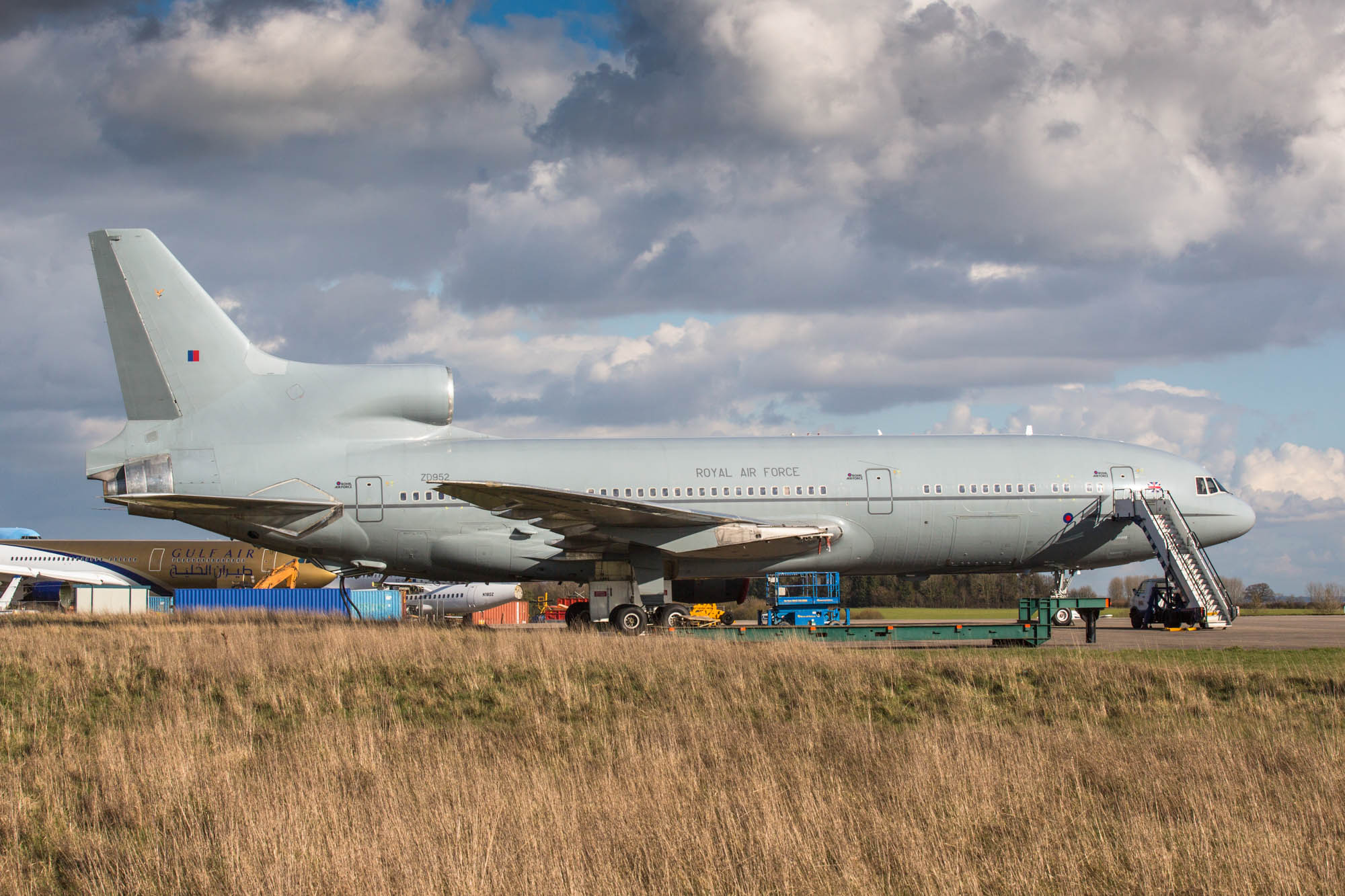 |
| TriStar K.1 (ZD952) it's days with 216 Squadron have ended at Cotswold airport (formally RAF Kemble) a few weeks after its final flight. |
| Left to right: Lockheed TriStar K1 (ZD951) the former 216 Squadron tanker was retired after a 30 year RAF service in March 2014. It is held with five others by GJD Services awaiting a buyer in March 2016. |
| Left to right: TriStar K.1 (ZD949) in a new toned down colour scheme in May 2005 with TriStar K.1 (ZD951) still in the old scheme, by mid 2006 an all grey scheme was being applied. |
| Left to right: TriStar K.1s (ZE705 and ZD953) at Brize Norton in September 2004. Spanish Air Force EF-18A Hornets refuelled with RAF TriStar part a sortie during TLP 2004-4 in September 2004. |
Jaguar GR.3A (XZ113) from the SAOEU (later to become FJ&W OEU) using callsign 'Gauntlet 86' flew with TriStar KC.1 'Fagin 43' for almost five hours whilst conducting fuel consumption trials on an improved engine. Photography was relatively easy with the sun behind you. A 28-135mm lens is more than adequate. Various cloud patterns and changes in the Jaguar's relative height to the TriStar, gives some variation to the shots. A wide aperture is important as the windows are often very scratched and stained, but this appears to make little difference to the shots at up to f5.6. The right hand shot above, shows the Jaguar's airbrakes in action. When a receiver first arrives these are used to slow it down to the speed of the tanker. The receivers join up in formation on the tanker's starboard side, where they are expected to make visual contact with the tanker's captain. They move to the port wing when refuelled before departing.
(Note: On April 1, 2007 the tanker's 'trade' has swapped sides (under NATO procedures rule ATP56B). They now join on the port side and depart from the starboard side. The change was made to standardise procedures with other countries including the United States Navy with whom they now more frequently perform joint sorties in the Middle East region). |
Four Tornado GR.4s of 617 squadron from RAF Lossiemouth, using callsigns Vandal 1-4, were scheduled but only two arrived around 12:30 for refuelling (including ZA365 'AJ-Y' and ZA462 'AJ-P').
|
| Tornado GR.4As of 2 Squadron from RAF Marham using callsigns 'Spartan 1-6'. Only two of the six arrived including ZA404 'W' and an aircraft devoid of any squadron marks. |
At 16:15 we are stood down, having used up the 114,000 lbs fuel we started with. Captain C J Starr offered me some insight into the mission, which today lasted six hours and eight minutes. Pilots with 216 squadron should expect to fly between 500 and 700 hours each year.
Right: The Flight Engineer monitors the progress of the current receiver, as displayed on the green screen. |
| Refuelling 'trade' and missions vary considerably. TriStar (ZD951 'Fagin 43') on 11th November, produced a Typhoon in AARA 13 over Irish Sea, before we routed across to AARA 5/6 over the North Sea. Here the receivers were a Nimrod R.1 (XW664, c/s 'Vulcan 51'), a Boeing E-3D Sentry (ZH104, c/s 'NATO 33') and through dusk and into complete darkness was a C-130K Hercules C.3 (XV301, c/s 'Ascot 690'). All three heavies were for around an hour or more each and in succession, practising taking on fuel, with numerous hook-ups and even more attempted hook-ups. |
| Tornado F.3 (ZE165 'GE') of 43 Squadron, awaiting to receive fuel from a TriStar (ZD950 'Fagin 42') during the TLP 2004-4 exercise over North Sea. |
Left to right: 43 Squadron Tornado F.3 (ZG757) in special 90th anniversary markings over North Sea in April 2007.
Nimrod R.1 (XW664) in November 2004.
Tornado F.3 (ZE155) of BAE Systems at Warton, conducting missile firing trials in July 2005.
Tornado F.3 (ZE288 'HA') of 111(F) Squadron from RAF Leuchars just off the UK east coast in May 2005.
|
Left to right: Typhoon IPA.5 (ZJ700 c/s 'Tarnish') of BAE Systems at Warton conducting refuelling trials with TAC towline in July 2005. The trials were at 20,000 feet (AARA 6) and later high level at 35,000 feet (Danger area EGD323). The tanker was 216 Squadron TriStar (ZD950).
|
| Tornado F.3 (ZE838 'GH') during Tactical Leadership Program (TLP 2004-4) course in September 2004. |

